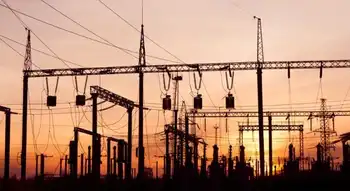Peak performance in San Francisco
By San Francisco Chronicle
Electrical Testing & Commissioning of Power Systems
Our customized live online or in‑person group training can be delivered to your staff at your location.

- Live Online
- 12 hours Instructor-led
- Group Training Available
The San Francisco Public Utilities Commission has the opportunity and obligation to approve a contract to install new electrical power plant that will be owned by the city, ensuring the closure of the 50-year-old Potrero Power Plant that daily discharges tons of particulates, nitrous oxide, sulfur and carbon dioxides into our air, as well as 240 million gallons of superheated water into the San Francisco Bay.
In 2001, District 10 Supervisor Sophie Maxwell, working with San Francisco's Power Plant Task Force, passed legislation requiring that the SFPUC create an Electricity Resource Plan, the city's first energy vision. It calls for aggressive solar and wind power programs, leading to passage of the city's solar initiatives. It promotes energy efficiency and conservation. It identifies the need for transmission upgrades and education for energy reduction and the importance of lowering peak power demand.
That plan also recognizes the need for in-city generation, and specifically calls for the use of flexible combustion turbine technology, which allows cleaner and more efficient production of electricity. The four "peakers" are far cleaner than the current Potrero Power Plant, operate only during peak energy needs rather than almost continuously and use recycled cooling water with zero discharge into the bay. Smokestack emissions will be mitigated 100 percent by using high-tech street sweeping and low-tech tree planting. It funds expansion of asthma and health programs in the Bayview and Potrero neighborhoods.
The California Independent System Operator oversees California's electricity grid and power generation. The city, PG&E, environmentalists, consumers and other stakeholders worked with the system operator to develop the San Francisco Bay Area "action plan," a series of projects necessary to meet San Francisco's electrical reliability needs for the next 15 years, while allowing the closure of the old polluting plants. The SFPUC's combustion turbine project is one of the necessities.
Mayor Gavin Newsom and the Board of Supervisors approved the installation of a 56 mile, 400 megawatt transbay cable between Pittsburg and the Potrero district to add a secondary power pathway to the city, a necessary plan component that PG&E fought. Additionally, Pittsburg is the closest substation to the state's biggest renewable energy installation- the future 1200 megawatt Solano/Vacaville Wind Farm. It will also allow a second pathway into PG&E's downtown electrical distribution system, which is a critical gap in the current system.
Unfortunately, PG&E acts threatened by any step toward local control. A PG&E funded mailer said that a new "study" shows that the Potrero Plant can be closed without building the peaker units. PG&E didn't mention that it authored the "study," which has twice been dismissed by the Independent System Operator.
The Potrero Plant cannot operate profitably without the state-subsidized "reliability must run" contract. The cost of the combustion turbine project will be borne by all California ratepayers. Most important, the 25 percent reduction in pollution with the cleaner burning combustion turbines will be better for the health of the community. As Task Force Chair Philip DeAndrade testified to the public utilities commission, "SFPUC's CT's are the surest and quickest method we have to get rid of the dirty polluting Potrero power plants."












